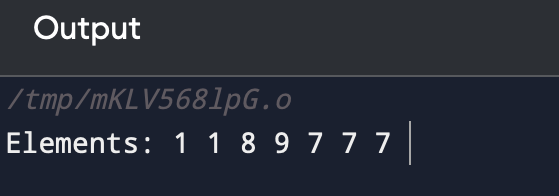unordered_multiset emplace_hint() function in C++ STLThe unordered_multiset, an unordered associative container in the C++ STL, allows several elements with the same value to hold a collection of unique objects. A new element can be inserted into the container at a designated location using the emplace_hint() member function of unordered_multiset. Syntax:Here's the general syntax of emplace_hint(): position_hint: It indicates the approximate location of the element's insertion. For optimal performance, the function will attempt to insert the new element as close to this position as feasible. args: These are the arguments passed to the new element's constructor. Return value: An iterator pointing to the location of the inserted element or the element with the same value that already exists is returned. Example:Here's a simple example to illustrate the usage of emplace_hint() in C++: Output: 
Explanation: In this example, a hint found by looking for element 3 is used to insert element 6 into the unordered_multiset using the emplace_hint() function. After that, the value at the location of the recently inserted element is printed using the iterator. In some cases, using emplace_hint() with the right hint can be more efficient than using emplace() or insert() because it indicates the possible insert position, possibly preventing needless searches. Remember that the quality of the hint supplied determines how effective emplace_hint() is. A hint near the insertion position may result in improved performance. However, giving a wrong hint could cause performance to suffer. Example 1:Let us take an example to illustrate the emplace_hint() in C++. Output: 
Example 2:Let us take another example to illustrate the emplace_hint() in C++. Output: 
Benefits of unordered_multiset emplace_hint() function in C++C++'s emplace_hint() function is useful for inserting elements into unordered_multiset containers. Using emplace_hint() has the following advantages:
It's crucial to remember that the precision of the hint supplied determines how helpful emplace_hint() is. When performance degrades due to inaccurate hinting, it may be better to use the insert() or emplace() function without a hint. |
 For Videos Join Our Youtube Channel: Join Now
For Videos Join Our Youtube Channel: Join Now
Feedback
- Send your Feedback to [email protected]
Help Others, Please Share










